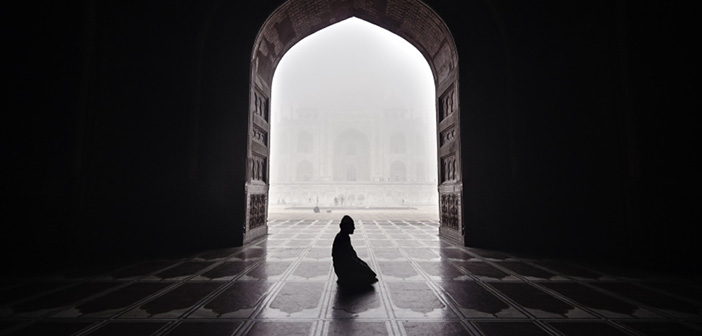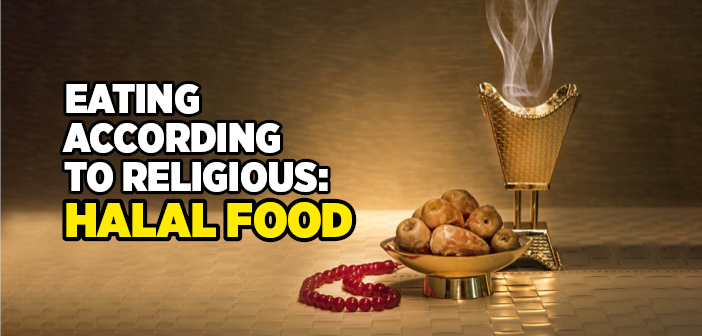What is Tawajjuh? What does Tawajjuh mean? What does tawajjuh meaning in english?
Tawajjuh is for the murshid to direct all his spiritual powers onto the murid and thereby pass his spiritual mindset onto him; it is the act of devoting spiritual attention. To say the same thing in another way, it is for the murshid-i kamil to transfer his beautiful states, in their entirety, onto the murid and hence exercise a positive effect on his heart and spirit. Tawajjuh has various means, both primary and secondary. Among these, we will talk about two in particular: the eye (nazar) and the essence.
The Eye
The eye is a means of seeing. The effect that comes about through seeing is conventionally referred to as ‘the eye’, meant by which is what the eye actually does, that is the act of ‘looking’. In everyday language, ‘the look’ (nazar) is used more to refer to the negative effect brought about by looking, that is ‘the evil eye’. The term ‘evil eye’ (nazar or isabatu’l-ayn) is commonly used to express the physical and spiritual damage incurred from the look or the eye of another. This kind of ‘looking’ has been made mention in some ahadith:
“The evil eye (nazar) is real.” (Bukhari, Tibb, 36)
“The evil eye sends man to the grave and a camel into a pot (kills it).” (Suyuti, al-Jamiu’s-Saghir, II, 60)
Knowledge based on experience on the effects of the eye is a fact accepted by all. Yet the effects of the eye are not just negative as commonly accepted; they may also be of a positive nature. The reason that brings about this effect is that the eye emits a ray onto whosoever it looks, whose nature is not quite known. And the effect is shaped according to the positive or negative nature of the ray. Facts presented by contemporary physics on rays are developed to such an extent that they leave no choice than to accept them.
The laser beam, discovered only in this century, is also a type of ray. It is now common knowledge that laser beams are used in diverse tasks of a difficult nature, from cutting thick steel to performing medical operations. Known from even way before was the diverse reactions shown by various objects, especially their colors, on exposure to rays of light.[1]
The effects caused by the rays emitted from the eye on physical objects are not always on the same level of intensity for the looker and the recipient. Just as some eyes emit rays, both positive and negative, that are of a more intense nature than others, some recipients are prone to being affected more. Some possess a greater inclination for being affected, while others do not. The public usually refers to persons identified as emitting strong yet negative rays in their looks as ‘evil-lookers’ and does their best to avoid their looks.
Nazar is valid even in animals. The look of an adder, for instance, is so affective that it can result in miscarriage and even in the death of some living organisms.[2]
‘The look’, with which the public is intuitively or traditionally –albeit not scientifically- acquainted, plays a vital role in the training of the disciple in tasawwuf. As a legacy of the Blessed Prophet -upon him blessings and peace- whose inheritor he is, a murshid-i kamil is a person whose power of vision has reached its furthermost extent of influence, as a result of his spiritual training and inner purification.
Coming right behind the chain of Prophets in the spiritual rankings of humankind are the Companions. The term sahabah, the Arabic equivalent of ‘Companion’ which shares the same etymological root with sohbah, is used in reference to those who were honored to be in the inspirational presence of the Blessed Prophet -upon him blessings and peace-, in a state of having believed in what he brought. Yet, even though they owe their respect and honor, by and large, to having been in the presence of the Prophet -upon him blessings and peace-, the main cause is essentially the privilege of having been subject to his ‘look’. Notwithstanding the various criteria put forth in determining the eligibility of being considered a ‘Companion’, the most widely accepted among them is for a person to be subjected to the look of the Blessed Prophet -upon him blessings and peace-, to have looked at him and to have been looked back on.
Even a top of the tier saint cannot, in any way, be compared to a Companion, even if he be a Companion of the lowest degree. This is because each Companion carries a distinct quality that comes with being subjected to the look of the Prophet -upon him blessings and peace-, a quality incomparable to any other, which has no other substitute. Because Muslims subsequent the generation of Companions were not privileged with this look, they were not able to attain to the privileged status of ‘companionship’. Still, those fortunate to see those who had seen the Blessed Prophet -upon him blessings and peace- are referred to as Tabiun and their successor, Taba-i Tabiin.
With that said, being the spiritual inheritors of the Blessed Prophet -upon him blessings and peace-, saints possess an authority and power incomparable to any of their contemporaries. To fully benefit from a murshid-i kamil, it is therefore not enough to simply be a number among those who feel affection for him. One must furthermore seek to attain the inspirational honor of becoming subjected to his enlightening gaze.
The Blessed Prophet -upon him blessings and peace- says: “Beware of a believer’s perception; for he looks with the light of Allah.” (Tirmidhi, Tafsir, 15) The perceptive power of each Muslim corresponds to his depth of iman. Having a maturity of faith, the perceptive powers of saints therefore exceed that of other Muslims.
The word ‘beware’ mentioned in the hadith is meant as a caution against entering the presence of mature Muslims with hidden agendas and a confused mind, as with the help of an exceptional power of perception, they will sense that which one tries to keep hidden. As external veils are parted for those whose perceptive powers have reached such a level, they instantly acknowledge things for what they are. Religious manners thus demand one to keep hold of his tongue in the presence of a scholar, and of his heart in the presence of the wise.
Since ‘the eye’ is one of the most important means a murshid utilizes to train a murid, being fortunate enough to be on the receiving end of that look has been considered an enormous privilege.
A Personal Memory
It was during the years I was a student at the Imam-Hatip Lyceum when I met Ahmed Can, a man of a beautiful heart. He was a Pakistani who had a deep affection for the honorable Mahmud Sami Effendi -may Allah sanctify his secret-. He was no less devoted to my father Musa Effendi -may Allah sanctify his secret-, never wanting to leave his side. He would thus frequently come to Turkey to visit Mahmud Sami Effendi -may Allah sanctify his secret- and stay in the guesthouse in our garden.
He was animated by such a profound love that even on the days where there was no sohbah, he would still burn with an undying desire to see Mahmud Sami Effendi -may Allah sanctify his secret-, walking around his house in hope of catching a glimpse. One night he recounted how this love came to be:
“It was a season of hajj. I was sitting inside the Masjid of Medina, in an area referred to as Ashab-i Suffah within the Rawdah. At one stage, I noticed an elegant man with a clean face, whose appearance reminded one of Allah, glory unto Him, walk towards where I was sitting, with a group of amicable people behind him. Just as he was walking past me, he threw me a look.
That look, angelic and radiating, instantly carried me away to another climate, a world of another kind. Everything had suddenly changed. The spiritual pleasure I received from that look had me on the verge of losing consciousness. Moments later, when I regained my senses, I got up, intent on finding that man. But the renowned crowdedness of the Rawdah made that impossible.
Yet, hoping he would come back around to that same spot, I began waiting near where I had originally been seated. And thankfully, my hope was realized. I began following him, joyously. Those around him must have thought I was a beggar, as a few of them approached me, wanting to give me charity. True, I was not a rich man; yet the blessings of that man’s look made everything lose value in my sight. I felt like I had begun swimming in an ocean of contentedness. They eventually reached a house and began stepping inside. When I followed them in their wake, they, quite naturally, wanted to prevent me, as they did not know who I was. But Mahmud Sami Effendi -may Allah sanctify his secret-, that great man of wisdom, turned around and invited me inside. That day, I was exposed to many a spiritual manifestation of that man, many a look and attention (tawajjuh).
Alhamdulillah, my life has since changed for the better and I have become a totally different man, striving only for the life of eternity. To save up money each year to come here, in hope of benefiting from his look and attention, has now become my heart’s exclusive reason for joy.”
Essence
The use of ‘essence’ is the most shortcut and effective means utilized by a murshid to manage the murid’s heart and spirit. This is effectuated by virtue of the murshid, referred to as quddisah sirruh (may Allah sanctify his mystery), implementing his sirr, or mystery. The nature of this means is known only by him who uses it. As such, it belongs not to spoken tasawwuf (qal) but to its spiritual mindset (hal). Hence, detail of it cannot be found in books.
[1] In some libraries, they lay green covers on reading desks, to prevent the eyes from getting weary. Looking at the sea or the horizon has a soothing affect on the eye; much the same is the case with looking at something green. The reason as to why people usually wear white in summer is due to the capability of the color to reflect back what the sunrays it receives. Black reacts in the complete opposite. Far from reflecting the sunrays back to whence they came, darker colors absorb them and hence keep the body warm. While wearing white, the symbol of purity, inside the hospital, surgeons are seen wearing cyan green inside the surgery. This is due to the exact same reason: green exercises a soothing effect on eyesight. Dark tones of yellow and blue, on the other hand, again have an innate tendency to absorb the rays they receive. This must be the reason as to why children are made to wear blue amulets or gold coins to repel the negative influence of sinister looks.
[2] See, Bukhari, Badu’l-Khalq, 14.
Source: Osman Nuri Topbaş, Sufism, Erkam Publications





